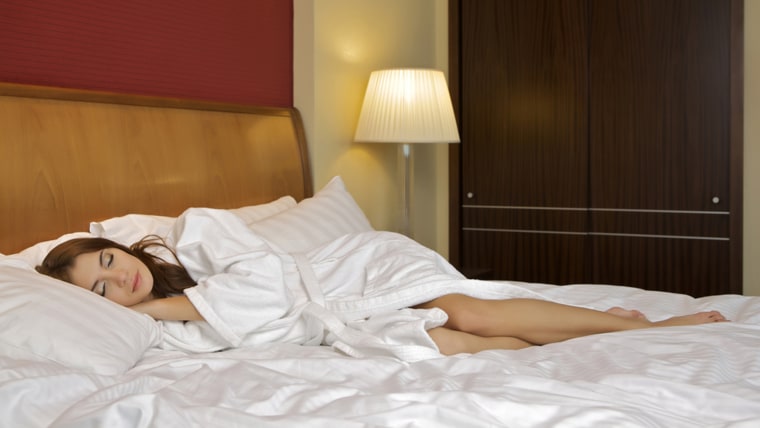Jet lag, or any major disruptive change in our sleep schedules, may one day be eased by series of quick flashing lights, a small new study finds.

Researchers at Stanford University have discovered that exposing people to a light-based therapy —before they travel — may provide a fast and efficient way to reset the circadian clock.
The flashes of light used in the study are so brief that 360 of them take up just one second, researchers reported Monday in the Journal of Clinical Investigation. Even more important, the light treatment can be used during sleep, says study coauthor Jamie Zeitzer, an assistant professor of psychiatry and behavioral sciences at the Center for Sleep Medicine at Stanford.
Jet lag is a disturbance to the natural circadian rhythm and can affect anyone traveling across multiple time zones. A standard treatment has been sitting in front of a bright light either early in the morning or late at night, depending on whether the traveler is flying east or west. But an hour of light buys only a 40 minute shift in the circadian clock.
Related: Six ways to battle jet lag
Zeitzer and his coauthor asked 39 volunteers to test out the flashing light therapy. During the first two weeks of the study, the volunteers got on a regular sleep-wake cycle. Then they came into the lab where some were exposed to continuous light for an hour while others were exposed to flashes of light every 10 seconds for an hour.
The flashing light delayed the onset of sleepiness the following night by two hours as compared to 36 minutes in the volunteers who sat in front of a continuous bright light.
“We’re getting a response that is three-fold greater than when people sit in front of a bright light for hours,” Zeitzer says. “We found that you could do this when a person is sleeping. The light passes through the eyelid and gets into the brain without waking the person up.”
The best way to deal with jet lag is to try to adjust before you travel, Zeitzer says. So, if you were traveling from California to New York tomorrow, you might use light therapy tonight, he explains.
If you normally wake up at 8 a.m., you would set the flashing lights to go off at 5 a.m. By the time you reach New York, your biological clock would already be in the process of shifting over to East Coast time, Zeitzer says.
Related: One frequent flyer's advice on beating jet lag
The Stanford researchers rigged a special apparatus to deliver the flashes of light for the new study. But a sleep mask with LED lights controlled by a smartphone could be available in a year or so, Zeitzer says.
The light treatment is “intriguing and exciting,” says Brant Hasler, a professor of psychiatry at the University of Pittsburgh. “It needs to be replicated by other groups with larger samples. But this group has being doing this kind of work for a while.”
Currently, the only non-prescription way to ease jet lag is the dietary supplement melatonin, a substance which naturally increases in the body as we become sleepy, or continuous bright light therapy, which can be time consuming, Hasler says.
Related: Single parents, women more likely to have sleep problems
Other than frequent travelers or shift workers, there's another group who might benefit — high school students trying to adjust to early start times, Hasler says.
That’s an idea that has also occurred to Zeitzer, who says his next experiment will be looking at whether flashing lights can help teens get to sleep earlier. “It might also help shift workers,” Zeitzer says. “Right now, there’s nothing we can do to help them.”